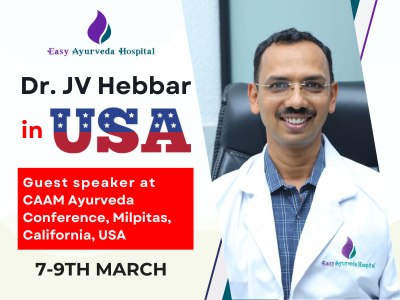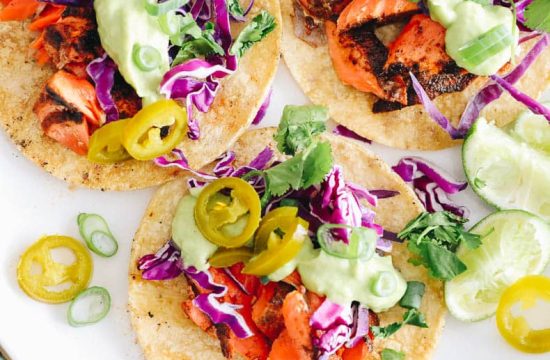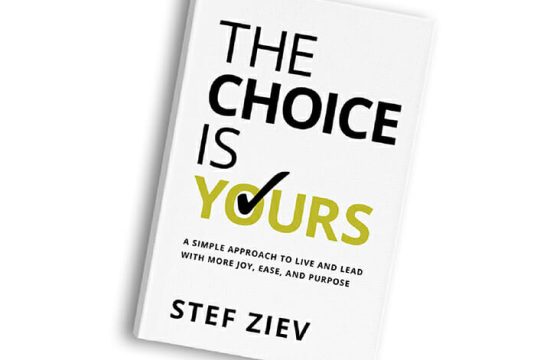Article by Dr Raghuram Y.S. MD (Ay) & Dr Manasa, B.A.M.S
Evaluation of HbA1c has become a game changer in diagnosing diabetes mellitus (type 2 DM) and monitoring blood glucose control in people with diabetes. It is a short term to describe ‘Glycated Haemoglobin’. It is also a tool for diagnosing prediabetes.
Glycated haemoglobin is a form of haemoglobin that is chemically linked to a sugar. When present in the bloodstream, most types of monosaccharides spontaneously bond with haemoglobin, including glucose, galactose and fructose. This happens when your body is unable to make use of the sugar properly. Therefore, the sugar which has not been utilized stays in the blood and sticks to the blood cells. The reading of HbA1c is taken quarterly because the red blood cells are active for around 2 to 3 months.
It is an average blood glucose level in an individual for the past two to three months. High levels of HbA1c means that you have too much sugar in the blood. This also indicates that sugar levels are out of control and one may develop complications of diabetes.
Detecting and monitoring HbA1c will help in keeping a check on the control of diabetes and also to prevent the potential complications that can arise out of it.
The normal range of HbA1c level in non-diabetics is between 4%-5.6%. In prediabetics, the levels of HbA1c are 5.7-6.4%. In diabetics, the levels of HbA1c are 6.5% or higher than this. One may develop serious complications of diabetes if HbA1c levels goes above 9%. Vision loss / blindness, kidney failure, heart disease, stroke, diabetic neuropathy and gastroparesis are some of the notable complications of serious diabetes having HbA1c levels above 9%.
Related Reading – HbA1c
In this article we will try to glance at Ayurveda understanding of this condition and methods of coping with high levels of HbA1c.
Ayurveda Understanding of HbA1c
Basically, putting it in simple terms – high HbA1c is a build-up in the blood of glucose / sugar which the body is unable to convert or make use of. In other terms it is a state of increased sweetness in the bloodstream.
The Prameha Link
Diabetes Mellitus is correlated and studied in line with Prameha – a disease / syndrome explained in Ayurveda treatises. Basically, Prameha looks like a description of many urinary disorders or different presentations of disease processes caused by aggravated doshas as manifested through urine. But Prameha also includes elimination of some tissues and useful body components by urine and is beyond being a urinary disorder. Vataja Prameha – Prameha caused by predominant vitiation of vata is the closest condition for studying diabetes mellitus.
Ultimately, when any variety of prameha is not treated properly and on time, it leads to a condition called as madhumeha wherein the urine becomes sweet like the honey. Not only that, the whole body becomes sweet. This is the condition which has been correlated to Diabetes Mellitus.
In this context, the word ‘madhuryat cha tanoratah’ explains the entire body becoming sweet. This means to tell that the tissues also attain sweetness, and that includes blood tissue too. So too much of madhurya i.e. sweetness in the blood indicates the unutilized glucose levels left out in the bloodstream, adhering to the blood cells. (Ref – Madhava Nidana 33/26, Vagbhata Nidana – Chapter 10). This might sync with the explanation of raised HbA1c levels.
Importance of Kapha
Immaterial of the type of prameha, all pramehas have their origin from morbid kapha. Therefore, basically the disease and its symptoms will have the nature of kapha at the ground level of pathogenesis. We also have pittaja and kaphaja pramehas caused by predominant vitiation of pitta and kapha respectively. They too, in their initial phase are caused by the chief casual dosha i.e., kapha and in later period due to etiological factors favouring aggravation of pitta or kapha, these doshas dominate the clinical picture along with classical symptoms and manifestations of pitta or kapha. Increased HbA1c can be viewed from the angle of increase of kapha bhavas i.e. characteristic features of kapha in the blood, mainly the sweetness.
Involvement of Rakta in the pathogenesis of Prameha
There are various dushyas / dhatus – components of the body which are contaminated during a disease process – involved in the pathogenesis of prameha. Rakta – blood is one among them. So, in Prameha, Ayurveda believes that the rakta dhatu is invariably contaminated. Pitta is an abode of pitta but kapha and vata are also circulating through it. The problem is when kapha exceeds pitta in the bloodstream and gets localized therein. This will add to the sweetness to the otherwise bitter pitta / rakta. And when the alien dosha kapha is not dealt with in proper time, the kapha makes blood its home. Increase of kapha-ness in the blood will increase the sweetness, which indicates the increased blood glucose reflecting the possibility of raised HbA1c levels. The same events can also happen when the tissues belonging to the kapha category, like rasa, meda and mamsa stay for a long time in the bloodstream.
The ’medo dhatu’ and ‘medovaha srotas’ connection
Prameha is said to be caused due to medovaha sroto dushti – contamination of channels of fat tissue. Meda – fat tissue is also one of the tissues involved in the pathogenesis of prameha. In fact, prameha is caused due to predominant involvement of meda and contamination of medovaha srotas.
Blood and pitta are interrelated through ashraya ashrayi bhava relationship. Pitta resides in the blood. Kapha and Vata too are circulating in the blood but when they lodge therein, they become alien to pitta. Similarly, the other tissues or tissue components moving across in the bloodstream are alien to the blood.
Meda is a kapha varga dhatu i.e. a tissue predominant in kapha and they are also related by ashraya ashrayi bhava relationship.
Kapha is sweet in nature (one of the qualities of kapha). So, since kapha resides in meda dhatu, meda dhatu is also sweet in nature.
Obesity, according to modern medicine, is a causative or risk factor for diabetes. Obese people or overweight people have issues with improper blood sugar control and consequently raised HbA1c levels.
The Rasa Dhatu link
Rasa, which is compared to lymph / plasma – is also the tissue related to kapha just like meda dhatu. Kapha is also located in rasa. Though most tissues involved in the pathogenesis of prameha belong to the ‘kapha category’, I have considered only rasa and meda dhatu in this context because we can find them in the bloodstream.
While rasa is being formed from the essence of food i.e. ahara rasa, a small waste portion is formed, which is kapha – a dhatu mala. So, when the tissue fire of rasa dhatu is weak, plenty of immature rasa tissue is formed, the quantity which is not needed in the body (rasa dhatu vriddhi). This results in excessive formation of malarupa kapha – i.e. kapha which is a waste byproduct. These events will have an impact on the very next dhatu which is produced in the chronology i.e. rakta dhatu or blood tissue. Due to the increase of rasa and kapha, there develops extreme sweetness in the blood – which is nothing but an explanation of increased levels of blood glucose, which in turn reflects the possibility of increased HbA1c levels, when the blood comes under the microscope.
In short, a build-up of kapha, rasa and meda in the bloodstream will increase madhuratva – sweetness to abnormal proportions in the blood. The ama also can cause similar events.
When these components are not dealt with, they continue contaminating the blood and are carried to all parts of the body.
These events, according to Ayuveda, can be considered as those leading to increase of blood glucose or blood sugar in the bloodstream.
The uncontrolled madhuratva or sugar bound to rakta can be considered as increased values of HbA1c according to Ayurveda, since Rakta denotes blood cells, inclusive of haemoglobin.
Agnimandya & Ama Link
Agnimandya – weakness of digestive fire is responsible for production of ama. This ama being a metabolic toxin of sticky nature clogs all the channels of the body. The fire depletion in the gut would influence the metabolism in the tissues by hampering dhatvagni – the tissue fires. Ama is also invariably involved in the pathogenesis of prameha. This ama also gets associated with doshas. When this ama gets associated with doshas in circulation, in the bloodstream, the doshas too would get stagnated in the blood carrying channels and cause clogs. Ama, being similar in nature and qualities with kapha, will also contribute towards increased sweetness in the blood and hence becomes responsible for increased HbA1c values.
Ayurveda Understanding of HbA1c from the perspective of ‘Need for test’
The people suffering from the below mentioned conditions are fit for HbA1c test –
– Those suffering from prameha and not responding to conventional shodana or shamana line of treatment
– Those having vataja type of prameha
– Those having prameha for a long time period (chronic)
– Those having medovaha sroto dushti (contamination of fat conveying channels in the body)
– Those having sthoulya – obesity or medo roga – diseases caused due to errors in fat metabolism
Modern medicine too advocates diabetes patients to get this test done in conditions demanding this test (as described above). The other conditions wherein this test should be considered and done are in the presence of – excessive thirst, increased frequency of urination, dry skin, unexpected weight loss, feeling tired always and blurring of vision.
Observing from close, all these symptoms are caused by vata aggravation. Though these symptoms may not be described in the Ayurveda texts, Ayurveda describes elimination of many tissues or useful components through urine and also the involvement of many tissues in the pathogenesis of prameha.
In medoroga it is explained that no tissues are nourished when the srotas of the body are blocked by increased fat. These symptoms (mentioned in this paragraph) point towards the same mechanism. And we should remember that the fat conveying channels are the root source of the disease.
When symptoms of depletion of tissues, excessive fat in the body and presence of uncontrolled symptoms of vata increase along with classical symptoms of prameha for long duration, not responding to any format of treatment, medicines and therapies, the physician should consider getting the HbA1c done.
Other interesting points in the prognosis of disease and possibilities of bringing down the values of HbA1c
1. CDC recommends A1c test to be done to those over 45 years in spite of there being no reason to suspect the presence of diabetes. If one is below 45 years of age but is overweight or obese, having at least one risk factor for diabetes or prediabetes including family history of diabetes and if one is physically active for less than three times in a week.
This ‘above 45 years’ age in the current era belongs to pitta predominance and a transitional period moving towards vata predominant age. The ‘below 45 years’ age definitely belongs to pitta predominance. Since the pitta will be predominant in this age, in patients with or without diabetes, the disease and the damage caused by the same will be in moderate proportions and the prognosis will be favourable. The HbA1c levels will also be moderately raised and since all modalities of treatments can easily be administered, the chances of controlling or bringing down the HbA1c levels and reversing the diabetes will be comparably easier.
Pitta predominant prameha types are difficult to cure and this is the right age for screening pittaja or vataja prameha.
2. As per the ADA (American Diabetes Association), the screening for diabetes should be done no later than 35 years of age. Those individuals who are obese, overweight or have other risk factors of diabetes should immediately start screening immaterial of the age. The test shall be repeated every three years if the results are normal. The screening should be done often if one has symptoms or risk factors of diabetes.
As per this, the age is in kapha predominant time or in the transition between kapha and pitta or earlier pitta time. Those having risk factors or young adults or children suffering from diabetes are definitely in the kapha age group. This age will be favourable for treating since kapha predominant prameha types are easily curable. The raised HbA1c will be in a controllable range or it would be wise to say that it responds better to all and aggressive treatment modalities including shodhana. This is the right age group for screening kaphaja or pittaja prameha.
Ayurveda Management and principles of lowering the raised HbA1c levels
Goal of Treatment
The main goal will be to maintain HbA1c between 7% and 8%. More sincere and constant efforts can bring it to 6.5% or lower.
Modern medicine follows the principle of implementing an effective combination of diet, exercise and medication to bring HbA1c levels to optimum levels.
Ayurveda too advocates the same principles in treating any disorder.
Diet – Diet which is antagonistic to raised kapha, meda and ama should be designed. Modern medicine insists on moderating carbohydrates. Basically, the kapha increasing foods are sweet taste predominant foods which also include carbohydrates. And all kinds of prameha are caused by increased kapha. Prameha is a santarpanottha roga i.e. disease caused due to over eating or food saturation. This includes not considering the proper quantity of food while consuming. Modern medicine too insists on following a planned food with proper portion size and also consumption of balanced meals. The explanation by Ayurveda to limit Madhura ahara syncs with the explanation of ‘skipping sugary foods and drinks’ in modern medicine.
Exercise – Exercise to combat the same components should be planned and implemented by the physician. Agni Deepana – kindling the digestive fire and medasah kshaya – i.e. destroying the increased fat are mentioned amongst the benefits of vyayama – exercise. This is as similar as the description of exercise burning the blood sugar explained in modern texts. Exercise should neither be too much or too less.
It is important to know the signs of low blood sugar which may occur if the sugar levels drop too much following too much exercise or totally avoiding carbohydrates or aggressive treatment approaches to lower sugar levels through medicines, diet and therapies. This would lead to too much decrease of kapha, meda, rasa, mamsa and ojas. This would lead to an increase in vata. The symptoms of low blood sugar are similar to those of vata increase. They include shaking of the body, weakness, tiredness, excessive hunger, being lightheaded, irritable and anxious or confused. In this condition, the aggravated vata should be controlled by administering foods, medicines, therapies and comforts which are antagonistic to vata.
Medication – The disease modifying medicines, herbs, diet and lifestyle modulations as explained in the context of prameha / madhumeha shall be considered to bring down the HbA1c levels to normal while comprehensively treating the diabetes and its complications. Both dosha pratyanika – dosha specific and vyadhi pratyanika – disease specific treatment principles should be planned and executed.
Other principles to bring back HbA1c to normal levels
The below mentioned principles too should be considered to bring increased HbA1c levels to normal levels –
Prameha Chiktsa – treatment on the lines of treating prameha.
Medovaha Sroto Dushti Chikitsa – treatment on the lines of treating the contamination of channels of transportation of fat.
Medoroga Chikitsa – implementing treatment principles of ‘errors of fat metabolism’.
Sthoulya and Medo Vriddhi Chikitsa – following the line of treatment of obesity and increase or accumulation of fat tissue in the body.
Agnimandya and Ama Chikitsa – treatment to cure sluggishness of digestive fire and ama i.e. deepana and pachana treatment should be implemented.
Kapha vriddhi chikitsa – management of pathological increase of kapha and its symptoms.
Panchakarma and other Therapies
Vamana – is ideal therapy for those having high levels of HbA1c due to Kaphaja Prameha and suffering from one of its subtypes, in the kapha age group, and also to a patient who is strong and obese.
Virechana – is ideal therapy for those having high levels of HbA1c due to Pittaja Prameha and suffering from one of its subtypes, in the pitta age group, and also to a patient who is strong and obese.
Generally, shodhana is preferred to those patients of prameha having dosha baladhikya – severe increase / exacerbation of doshas in the body.
Brimhana – nourishing therapies should be administered to the patients having vata predominant prameha or those who are emaciated.















